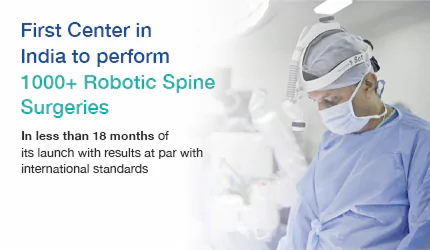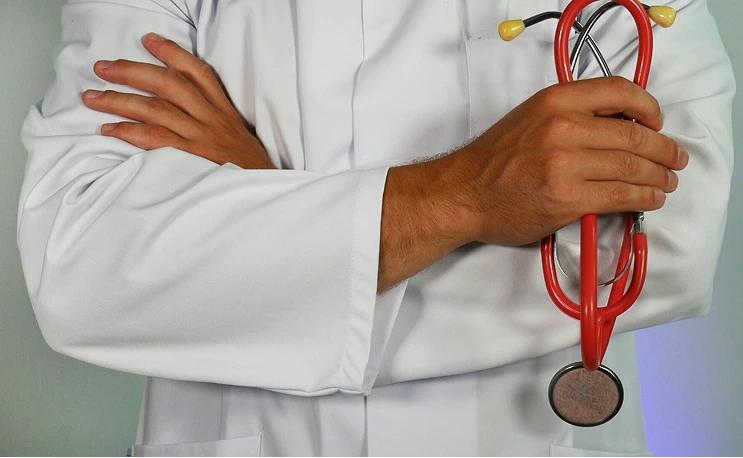When a Neck Injury Changes Everything
A car accident, a fall, or a sports injury can happen in seconds, but when it affects your neck, the impact can last much longer. If you've been told you have an "odontoid fracture" after such an incident, you're probably experiencing severe neck pain, difficulty turning your head, and concerns about what comes next.
The good news is that with proper treatment, most people with this type of neck fracture can return to their normal activities. Understanding your condition and treatment options is the first step toward recovery.
What Exactly is an Odontoid Fracture?
Think of your neck as a stack of building blocks. The second vertebra from the top (called C2) has a small peg-like projection that acts like a pivot point, allowing your head to rotate left and right. This projection is called the odontoid process, and when it breaks, it's called an odontoid fracture.
This injury is serious because:
-
It can make your neck unstable
-
It may cause severe pain and limit head movement
-
In rare cases, it can affect the spinal cord if left untreated
Types of Odontoid Fractures
Classification is based on where the break occurs, with three main types:
-
Type I: A break at the very tip (uncommon)
-
Type II: A break at the base where the peg meets the vertebra (most common and often requires surgery)
-
Type III: A break that extends into the main body of the vertebra (often heals without surgery)
-
Type II fractures are the most concerning because they tend to heal poorly on their own and may require surgical intervention.
Advanced Diagnosis at MIRSS
Accurate diagnosis is crucial for determining the best treatment approach. At MIRSS, we utilize advanced imaging technologies to precisely evaluate your fracture:
-
High-resolution CT scans provide detailed images of the bone structure and fracture pattern
-
MRI scans help assess soft tissue damage and spinal cord involvement
-
Intraoperative 3D CT allows our surgeons to plan the optimal treatment approach
This comprehensive imaging helps our team determine whether your fracture requires surgical intervention and, if so, which approach will provide the best outcome.
How Do We Decide on Treatment?
Your treatment depends on several factors:
-
Type and location of the fracture
-
How displaced (moved apart) the broken pieces are
-
Your age and overall health
-
Quality of your bone
How recently the injury occurred
Non-Surgical Options
-
Cervical Collar - For stable fractures, a rigid neck collar worn for 8-12 weeks may allow natural healing. However, success rates vary, and close monitoring is essential.
-
Halo Vest - This involves a ring attached to your skull with pins, connected to a vest on your chest. While effective for keeping the neck completely still, it's uncomfortable and limits daily activities significantly.
Surgical Options
-
Posterior Fusion (Back Approach) - This surgery connects the first and second neck vertebrae from behind using rods and screws. While very stable, it does reduce your ability to rotate your head.
-
Odontoid Screw Fixation (Front Approach) - This procedure places screws directly through the broken bone to hold it together while it heals. The major advantage is that it preserves most of your natural neck movement.
Odontoid Screw Fixation: A Closer Look
This surgery is often recommended for Type II fractures that are:
-
Recently occurred (within a few months)
-
Well-aligned
-
In patients with good bone quality
What Makes This Surgery Appealing?
Unlike fusion surgeries that limit neck rotation, odontoid screw fixation aims to:
Restore stability to the fracture
Preserve your natural head and neck movement
Allow faster return to activities
Avoid the need for rigid bracing after surgery
Advanced Surgical Technology at MIRSS
At MIRSS, we employ cutting-edge technology to enhance surgical precision and patient safety:
Robotic-Assisted Surgery
Our MazorX Stealth Edition (Medtronic) – a 3rd generation spine robot with integrated navigation capabilities – provides:
-
Enhanced accuracy in screw placement
-
Real-time surgical guidance
-
Reduced radiation exposure
-
Improved surgical outcomes
Intraoperative Imaging
Intraoperative navigation during surgery allows:
-
Real-time verification of screw placement
-
Immediate correction if needed
-
Reduced need for revision surgeries
Specialized Surgical Environment
Our state-of-the-art modular operating theaters are designed specifically for spine surgeries, featuring:
-
Advanced imaging integration
-
Optimal lighting and positioning systems
-
Sterile, controlled environment
The Surgical Process at MIRSS
Before Surgery
Your surgical team will:
-
Obtain detailed CT scans to plan the exact screw placement using robotic planning software
-
Review your medical history with our dedicated spine anesthesia team
-
Discuss the procedure, risks, and expected outcomes
During Surgery
The procedure typically takes 1-2 hours and involves:
-
Anesthesia: Our specialized spine anesthesia team ensures your comfort and safety throughout the procedure.
-
Positioning: You'll be placed on your back with your neck slightly extended in our modular operating theater.
-
Incision: A small horizontal incision (approximately 1 inch) is made at the front of your lower neck.
-
Robotic-Guided Screw Placement: Using the MazorX robotic system and intraoperative cone beam CT imaging, the surgeon precisely places one or two screws through the broken bone to compress and stabilize the fracture.
-
Neuromonitoring: Throughout the procedure, intraoperative neuromonitoring continuously tracks nerve function to ensure your safety.
-
Closure: The incision is closed with sutures and covered with a sterile dressing.
Our specialized OR staff trained specifically in spine surgeries work as a coordinated team to ensure optimal outcomes.
Recovery: What to Expect
In the Hospital
-
Most patients stay 1 day after surgery
-
Pain is typically manageable with oral medications
-
We don't recommend wearing any collar for most patients
-
Our nursing staff monitors your recovery closely
Rehabilitation with MIRSS
Our dedicated spine physiotherapy team creates a personalized recovery plan:
First 2 Weeks:
-
Gentle neck exercises as appropriate
-
Wound care instructions
-
Activity modifications
-
Pain management strategies
Weeks 2-6:
-
Progressive strengthening exercises
-
Gradual return to daily activities
-
Regular follow-up appointments
Months 2-3:
-
Advanced rehabilitation exercises
-
Return to work and sports activities as appropriate
-
Long-term maintenance strategies
Follow-Up Care
Regular follow-up appointments include:
-
Clinical examinations
-
Imaging studies to monitor bone healing
-
Adjustment of activity levels based on recovery progress
Warning Signs to Watch For
Contact your doctor immediately if you experience:
-
Increasing neck pain or new neurological symptoms
-
Signs of infection (fever, increased redness, drainage from incision)
-
Difficulty swallowing or breathing
-
Numbness or weakness in arms or hands
Success Rates and Outcomes
When performed by experienced surgeons using advanced technology, odontoid screw fixation has high success rates. Most patients experience:
-
Significant pain relief within weeks
-
Return to normal activities within 2-3 months
-
Preservation of neck rotation
-
Solid bone healing
However, like any surgery, there are risks including infection, bleeding, nerve injury, and the possibility that the fracture may not heal properly.
Why Choose MIRSS for Your Spine Care?
Comprehensive Expertise
-
Experienced spine surgeons specializing in complex cervical procedures
-
Multidisciplinary team including dedicated anesthesia and physiotherapy specialists
-
Specialized OR staff trained specifically in spine surgery protocols
Advanced Technology
-
3rd generation robotic surgery with integrated navigation
-
Intraoperative high-resolution imaging for real-time surgical guidance
-
Comprehensive neuromonitoring for enhanced safety
-
State-of-the-art modular operating theaters designed for spine procedures
Patient-Centered Care
-
Personalized treatment plans based on your specific condition
-
Dedicated teams for each aspect of your care
-
Comprehensive rehabilitation programs
-
Ongoing support throughout your recovery journey
Questions to Ask Your Doctor
Before making treatment decisions, consider asking:
-
Am I a good candidate for odontoid screw fixation?
-
What are the risks and benefits compared to other treatments?
-
How will robotic assistance benefit my specific case?
-
What should I expect during recovery?
-
When can I return to my normal activities?
Moving Forward
An odontoid fracture is a serious injury, but with proper treatment using advanced surgical techniques, most people can expect to return to their previous level of activity. The combination of experienced surgical teams and cutting-edge technology at specialized spine centers in Bangalore can significantly improve outcomes and recovery times.
At MIRSS (Manipal Institute of Robotic Spine Surgery), Bangalore, we combine the latest in robotic surgical technology with specialized expertise and comprehensive care teams. Our integrated approach – from advanced diagnostic imaging to specialized rehabilitation – is designed to provide you with the best possible outcome and fastest recovery.
From your initial consultation through complete recovery, our dedicated teams in Bangalore work together to support you on your journey back to health and active living.







